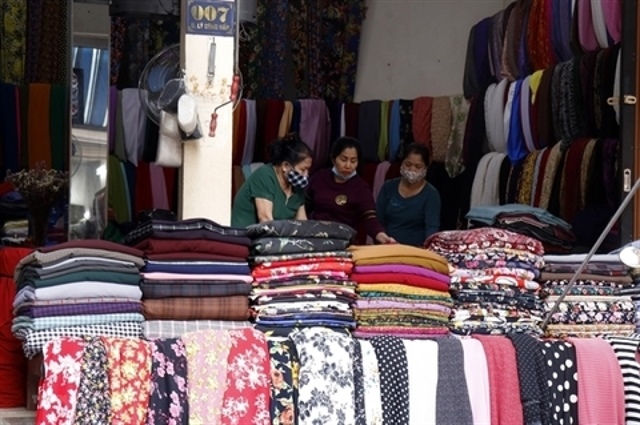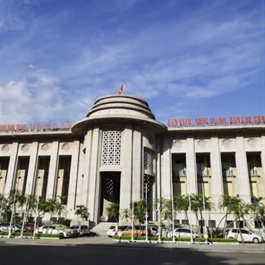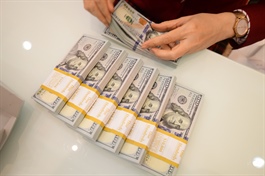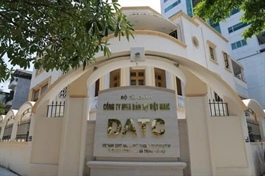Outstanding real estate loans reached $113bn in 2023: Vietnam cbank
Outstanding real estate loans reached $113bn in 2023: Vietnam cbank
Outstanding real estate loans amounted to VND2.88 quadrillion (US$113 billion) at the end of last year, according to the State Bank of Vietnam.
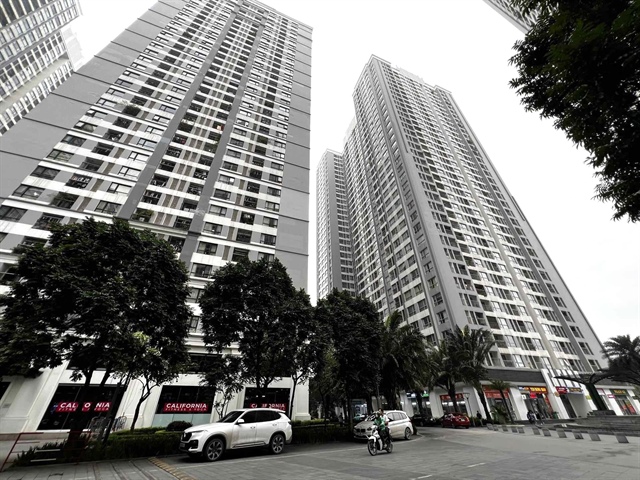
An apartment complex in Hanoi. Photo: Nam Tran / Tuoi Tre |
Of this total, VND1.09 quadrillion ($42.8 billion) was attributed to real estate business loans, while VND1.79 quadrillion ($70.3 billion) was allocated to consumer loans for personal real estate use.
These figures were disclosed in a report submitted by the State Bank of Vietnam to the monitoring delegation of the lawmaking National Assembly.
The report primarily focuses on the implementation of real estate market policies and the development of social housing between 2015 and 2023.
Addressing the credit supply situation in the real estate market, the State Bank of Vietnam highlighted a rapid increase in credit growth throughout the years 2015 to 2023.
Despite this growth, the non-performing real estate loans totaled only VND400 trillion ($15.9 billion), with a non-performing loan ratio for real estate standing at 4.2 percent.
However, lending for real estate experienced significant acceleration in subsequent years.
In 2017, the total outstanding real estate business loans across banking systems surged to VND529 trillion ($21 billion), marking a 9.21-percent increase.
Concurrently, the non-performing loan ratio for real estate rose to 4.58 percent.
Furthermore, the State Bank of Vietnam reported a continuous rise in outstanding real estate loans, encompassing both business and consumer categories since 2018.
Real estate lending witnessed a dramatic uptick of 23.26 percent in 2019, reaching VND1.6 quadrillion ($63.3 billion).
Despite the challenges posed by the COVID-19 pandemic, outstanding real estate loans continued to grow 12.06 percent in 2020 and 15.7 percent in 2021.
In 2022, outstanding real estate loans experienced another substantial surge, reaching VND2.58 quadrillion ($102.8 billion), reflecting a 23.91-percent climb compared to the preceding year.
The trend persisted in 2023, with lending credits for real estate rising 11.81 percent to VND2.88 quadrillion.
The central bank highlighted that a significant portion of outstanding real estate lending comprised medium-term and long-term loans.
Throughout the 2015-23 period, real estate lending accounted for 18-21 percent of the total outstanding loans in the Vietnamese economy.
To regulate the influx of funds into the real estate market, the central bank issued Circulars 36, 22, and 41 over the years, stipulating that fundraising ratios for medium- and long-term loans of banks must fall within the range of 24-34 percent.
Between 2015 and 2023, credit institutions collectively offered guarantees amounting to VND307 trillion ($12.2 billion) for the sale of houses under construction.
As of December 2023, outstanding commitments to issue guarantees for future homebuyers amounted to approximately VND35.6 trillion ($1.4 billion).
Additionally, credit institutions invested around VND191.4 trillion ($7.6 billion) in corporate bonds in that month.
The State Bank of Vietnam pointed out a potential risk factor stemming from the misalignment between the long payback period of real estate projects and the short-term funding sources of credit institutions.
Some credit institutions with high real estate credit ratios against their outstanding loans are particularly vulnerable to credit risks.






